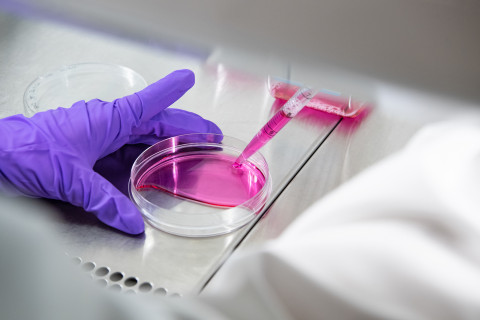The doctoral dissertation in the field of Neuroscience will be examined at the Faculty of Health Sciences at the Kuopio campus.
What is the topic of your doctoral research? Why is it important to study the topic?
Alzheimer’s Disease (AD) is globally the most common cause of dementia leading to inevitable neurodegeneration starting in memory related brain areas. With an expanding aging population, it is estimated that the economic burden and amount of people suffering from AD will triple by year 2060. Despite extensive research, there is no cure and promising drug candidates in preclinical animal studies have failed in clinical human studies. Still, the cause of the disease remains poorly understood. Recent genetic studies have linked pathological changes to inflammatory processes and glial cells. Moreover, they have revealed differences between human and animal models especially in inflammatory glial cells of the brain, microglia and astrocytes. The research of human glia has been hindered by the challenges of accessing viable human brain tissue and the dynamic nature of the glial cells. Thus, new approaches to understand and combat human AD are critically needed.
What are the key findings or observations of your doctoral research?
To overcome these gaps of knowledge, this dissertation established and utilized novel induced pluripotent stem cell (iPSC) technologies to study human microglia and astrocytes in order to elucidate the early inflammatory pathology in Alzheimer’s disease. To enable this, a novel method was established to differentiate patient-derived iPSCs to produce human microglia-like cells that resemble their in vivo counterparts and can be studied under controlled laboratory conditions. In-depth analysis of several functional aspects of glial cells carrying either causative or sporadic genetic risk factors were studied in response to multiple relevant stimuli. Importantly, new aspects of cellular metabolism and mechanosensation in human AD pathogenesis were illustrated, highlighting that these glial functionalities could impact the disease pathogenesis even independent of accumulating amyloid beta deposits, which have been the main focus of AD research for decades. Specifically, microglia carrying the most common sporadic AD risk factor APOE4/4 and astrocytes carrying AD-causing PSEN1DE9 mutation showed aggravated inflammatory responses that may contribute to early AD progression and exhibit impaired glycolysis and/or fatty acid oxidation. Targeting the aberrant astrocytic fatty acid oxidation as well as in microglial mechanical receptor PIEZO1, demonstrated that glial cells and their metabolism can be conferred to beneficial functional in vitro using human iPSC microglia or astrocytes. Finally, these glial functionalities were modulated in vivo in AD mouse models using small molecules demonstrating amelioration of cognitive symptoms or tissue pathology.
How can the results of your doctoral research be utilised in practice?
The findings highlighted in this thesis suggest that glial immunometabolism and their mechanoreceptors could be modulated in vitro and in vivo for rescuing AD-related glial dysfunctions and AD pathology in human and mouse models. Although the exact downstream signaling pathways in microglia and astrocytes were not defined, these pathways could provide prosperous starting point for mechanistic studies.
Even though this thesis proves that AD genetic risk factors affect the functionality of human glia, the manifestations of functional phenotypes were different depending on the risk factor and glial type. Thus, results herein support that a plurality of mechanisms can contribute to the development of AD. Patients may carry a unique set of multiple genetic changes that synergestically result in a greater risk for developing the disease. Patient-derived iPSC-glia that retain the unique genetic background of each patient are a valuable tool for understanding how polygenic risk factors determine AD progression and its subtypes. iPSC-glia allow exciting opportunities for controlled studies in 2D cell cultures providing a simple platform for studying specific detailed processes and pathways. Moreover, live iPSC-glia can be combined in 3D co-culture systems, including integration in brain organoids, to better model cellular interactions in brain diseases.
Collectively, iPSC models could help elucidating whether the genetic AD risks affect universal target pathways or whether the patients should be stratified to subtypes for treatment based on their genetic backgrounds. iPSC models can be also used for validating the targeted outcomes for reducing AD progression, and for identifying if the cell type and patient-specific targets could advance the precision medicine approach to treat AD.
The doctoral dissertation of Henna Konttinen, MSc, entitled Human stem cell-derived glial cells reveal metabolic dysfunctions in Alzheimer’s disease, will be examined at the University of Eastern Finland. The Opponent in the public examination will be Associate Professor Beth Stevens of Harvard Medical School, Boston Children’s Hospital, and the Custos will be Professor Tarja Malm of the University of Eastern Finland. The public examination will be held in English and it will be streamed online.



